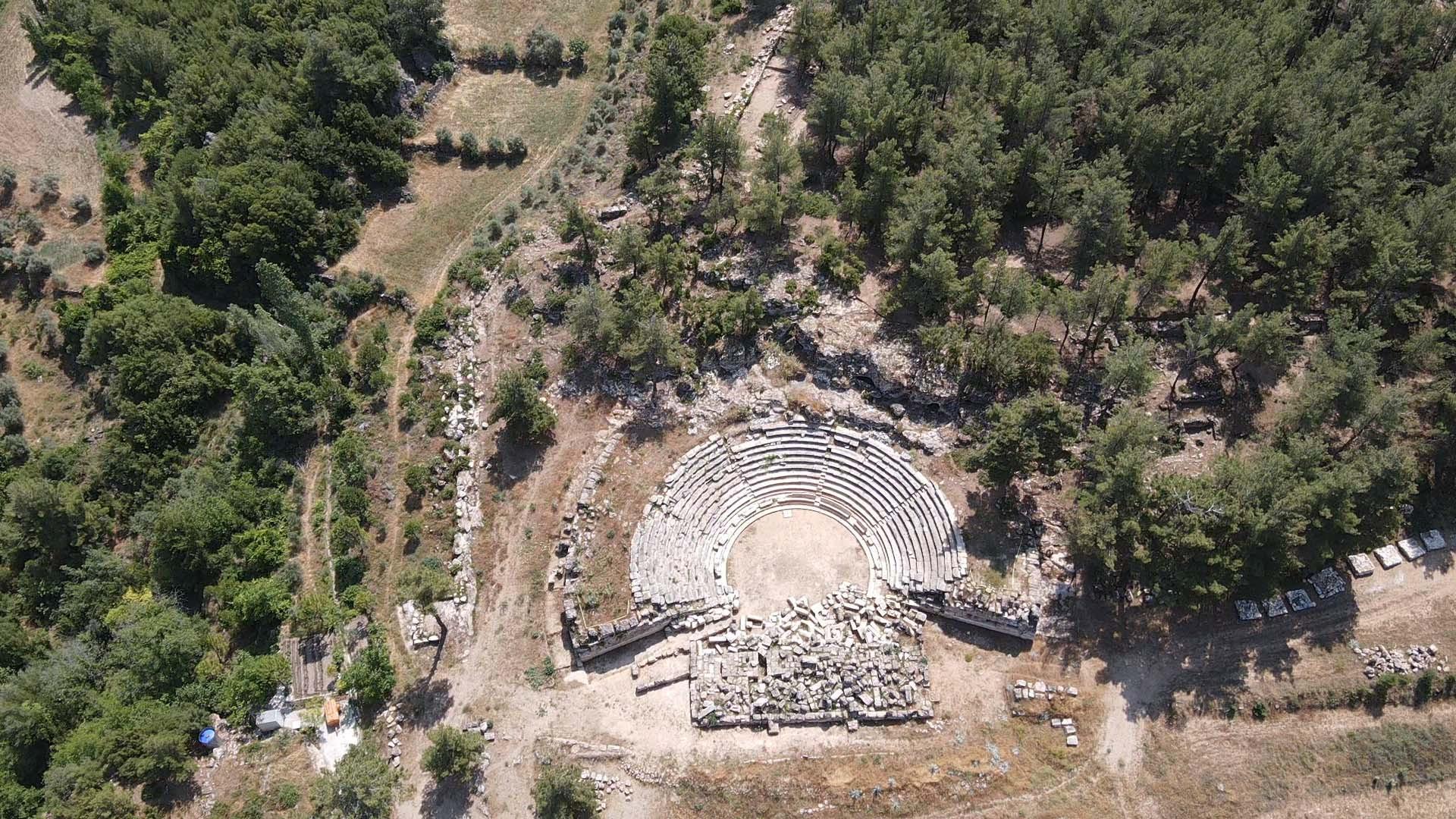
Excavation works are carried out in the ancient city of Hyllarima in Kavaklıdere, Muğla, aiming to unearth the shops whose boundaries have been identified within the city’s agora, its central gathering space.
Located in the Derebağ neighborhood, the site features structures from the Classical, Hellenistic, and Roman periods. The excavation was launched four years ago.
Despite being relatively recent, the excavations have made significant progress at this site, considered one of the oldest settlements in the inner parts of the Caria region. The ancient city, meticulously examined by researchers, is notable for its rarity and well-preserved architectural remains.
Excavation Chief Professor Bekir Özer described Hyllarima as “two hills, one city,” explaining that communities lived alternately between the two hills during different periods. Construction of the city began around the 4th century B.C., roughly 2,400 years ago, based on a fully stone-built, well-planned city model typical of the Coastal Aegean and nearby interior regions.
Özer highlighted key features including city walls, streets, a marble theater with its stage and council building, the agora, a fountain structure uncovered last year, rock-carved rooms, and a monumental gate.
As part of the Future Heritage Project, excavations at the agora and fountain have yielded important findings. This year, the team continues to dig in the same area, uncovering new data from Hyllarima, one of the cities that minted coins during the Roman era.
Özer pointed to the exceptionally well-preserved city walls as one of Hyllarima’s distinctive features and said: “The agora is the city’s central point. In antiquity, it was the first place visitors would arrive at. It hosted streets, the theater, public and social activity spaces. This is not a small agora. To its north are shops carved into the main rock in a row. We will soon start excavations of one of these shops, which were built in the Hellenistic period and heavily used during Roman times. We hope to gain significant insights from these shops.”
After completing the shop excavations in the agora, restoration projects will begin. Özer noted that despite recent earthquakes, the structural elements remain intact, which means visitors today can experience the agora as it was in ancient times.